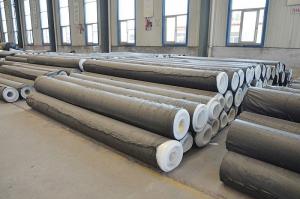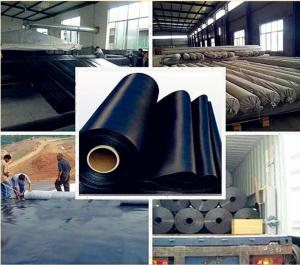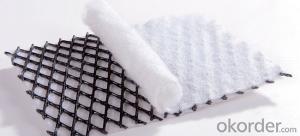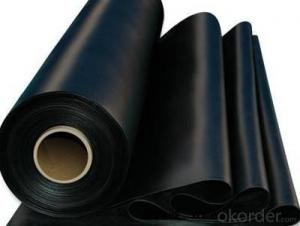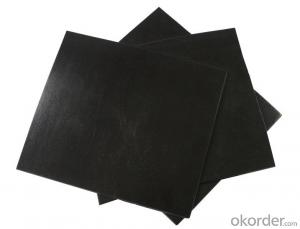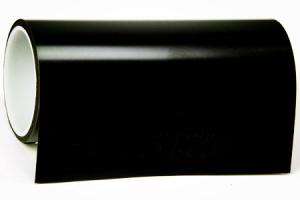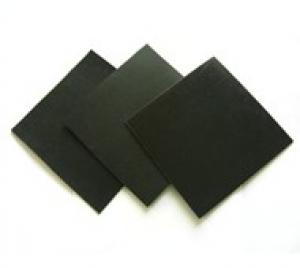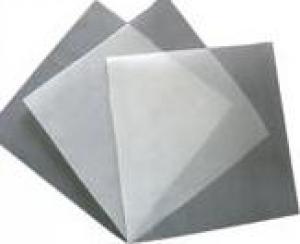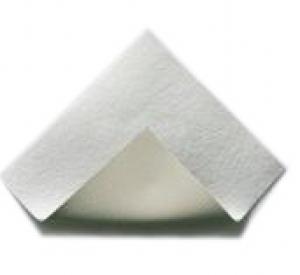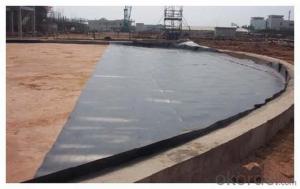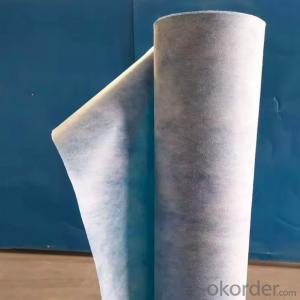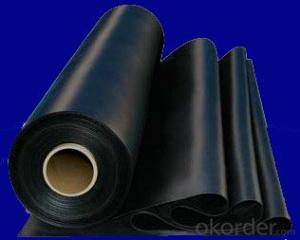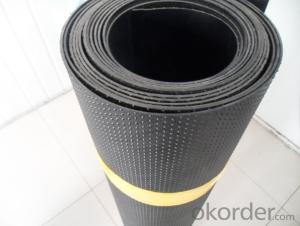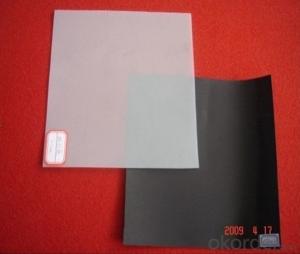Self-Adhesive Geomembrane for Wall Thermal andMoisture Protection
- Loading Port:
- Tianjin
- Payment Terms:
- TT OR LC
- Min Order Qty:
- -
- Supply Capability:
- 5000rolls m²/month
OKorder Service Pledge
OKorder Financial Service
You Might Also Like
Self-Adhesive Geomembrane for Wall Thermal andMoisture Protection
High performance self-adhesive geomembrane made from self-adhesive rubberbitumen glue
Specification of Self-Adhesive Geomembrane for Wall Thermal and MoisturePrtection
Thickness: 1.2mm - 2. Omm, 2m - 4m in roll width, the length as client ' s request.
Property of Self-AdhesiveGeomembrane for Wall Thermal and Moisture Protection
I. High tear strength and stability
2. Excellent in self-adhesive, easy for checking
3. Good self-healing property
4. Easy for construction
5. Special wet lay-up technique could be continuing construction under wetconditions even
Rainy season
Application of Self-AdhesiveGeomembrane for Wall Thermal and Moisture Protection
Mainly used in industrial and civil cellar underground structure, square floor,roof garden etc.
- Q:What is the hardness of HDPE board? What kind of knife is used to cut?
- DPE board (high density polyethylene sheet) melting point is about 130 ℃. It has good mechanical strength. It has good heat resistance and cold resistance, good environmental stress crack resistance. It is advised that the range of melting temperature is 200-250℃. The melting temperature is 220℃-260℃. The relative density is 0. For materials with larger molecules, 941-0, it has higher rigidity and toughness and good chemical stability. It can use carbide cutter tool or diamond cutter to cut. Dielectric properties. Hardness is about 30-45HRC.
- Q:What are the limitations of geomembranes in high-UV exposure conditions?
- Geomembranes, although highly effective in various applications, have some limitations when exposed to high levels of UV radiation. The primary limitation is their vulnerability to degradation and deterioration due to prolonged exposure to UV rays. Over time, the geomembrane material can become brittle, lose its mechanical strength, and develop cracks or tears. This can compromise the integrity of the geomembrane, potentially leading to leaks or failures in containment systems. To mitigate these limitations, protective measures such as additives, coatings, or shade structures can be employed to shield geomembranes from excessive UV exposure.
- Q:How to distinguish the quality of HDPE geomembrane?
- Orddinary people will find it very hard to distinguish its quality. You need to seek help form some authorized institutions to test the engineering data. Guodu building material testing center is an authorized HDPE geomembrane test institution. All the geomembrane used in international big projects is tested here.
- Q:How do geomembranes contribute to the preservation of river ecosystems?
- Geomembranes contribute to the preservation of river ecosystems by acting as a protective barrier that prevents contamination and pollution from seeping into the water. These impermeable liners help to mitigate the risks of toxic chemicals, waste leakage, and invasive species, thus safeguarding the natural habitat and biodiversity of the river. Additionally, geomembranes can be used for erosion control and sediment management, ensuring the stability and health of the riverbed.
- Q:Is the thickness gauge for lacquer film precise?
- The question is not whether the thickness gauge precise or not, but how precise you are required. The portable thickness gauge generally is not very precise. After all, the film is only tens of micrometers thick. The repeatability and reproducibility of the gauge is also not good. The Non-destructive gauge is generally not precise as destructive one.
- Q:What is the stick membrane method on the wall?
- 1. the hair dryer can be adjusted to the hot air grade to blow soft the paster, while blowing, you should expose the paper, and be careful not to blow coke paper, otherwise it will be cut off, the control just right to blow the glue soft state, the heat transfer can be appropriately adjusted to small grade . 2. it can be injected alcohol from a corner , not too much, let the glue inside softening , until it can be peeled off, but this method has met the original background wall may affect the original background, we need to choose the method according to the actual situation. 3. For the metal wall you can also use a similar chemical solvents such as acetone, with quick cleaning speed, good effect, but ordinary wall is not recommended. 4. For hard tile wall with a thin blade can also be scraped off the sticker applied to a small area of ??the sticker.
- Q:composite geo-membrane, two cloths and one membrane geomembrane 6 meters thick material how to use multiple sets of quotas
- 10 meters dam seepage-proof construction, 1000g composite membrane quotas are not accurate, depth 6 meters, each design Institute are not the same, two cloths one membrane composite membrane 800 grams per square meter is sufficient .
- Q:How many square meters is a batch of geomembrane?
- it depends on the production process, and production companies may produce a shift of one batch, there are number of direct production contract for one batch. In engineering, 10000 square meters can be understood as one batch
- Q:What is floor heating reflecting coating?
- The warm reflective film is called "aluminum foil", "tin foil", but strictly speaking it is not the "aluminum foil" or "tin foil" in the true meaning. In fact, it is a integrated product of vacuum aluminum?laminated?films, paper, cloth and the other thermal materials. The floor heatingre flecting coating is to protect the floor heating in the floor heating system. It is aimed to improve the reflection and radiation abilities of the key products. The selection of the tyles and quality of the floor heating reflecting coating has a direct effect on the temperature of the floor heating and the using effect of it. It is widely used in low-temperature floor heating engineering and pipe insulation. Due to the use of technology and its special additives, its brightness is generally much higher than the common floor heating reflecting coating, and several times than the reflecting rate.
- Q:How to install the electrothermal film?
- Electrothermal?film can be divided into several categories, namely printing ink, carbon?fiber and metal film. It is all in the form of a roll. To install the electrothermal?film floor-heating system, we must flatten the cement ground first. And then clean it up and install the electrothermal film on the floor. The wires must be parallel connected, insulated, and wrapped in silica gel. The final step is to test. If all goes well, we can continue to install the parquet. The installation of temperature controller is required. After setting the temperature, we can use it normally.
1. Manufacturer Overview |
|
|---|---|
| Location | |
| Year Established | |
| Annual Output Value | |
| Main Markets | |
| Company Certifications | |
2. Manufacturer Certificates |
|
|---|---|
| a) Certification Name | |
| Range | |
| Reference | |
| Validity Period | |
3. Manufacturer Capability |
|
|---|---|
| a)Trade Capacity | |
| Nearest Port | |
| Export Percentage | |
| No.of Employees in Trade Department | |
| Language Spoken: | |
| b)Factory Information | |
| Factory Size: | |
| No. of Production Lines | |
| Contract Manufacturing | |
| Product Price Range | |
Send your message to us
Self-Adhesive Geomembrane for Wall Thermal andMoisture Protection
- Loading Port:
- Tianjin
- Payment Terms:
- TT OR LC
- Min Order Qty:
- -
- Supply Capability:
- 5000rolls m²/month
OKorder Service Pledge
OKorder Financial Service
Similar products
New products
Hot products
Hot Searches
Related keywords
